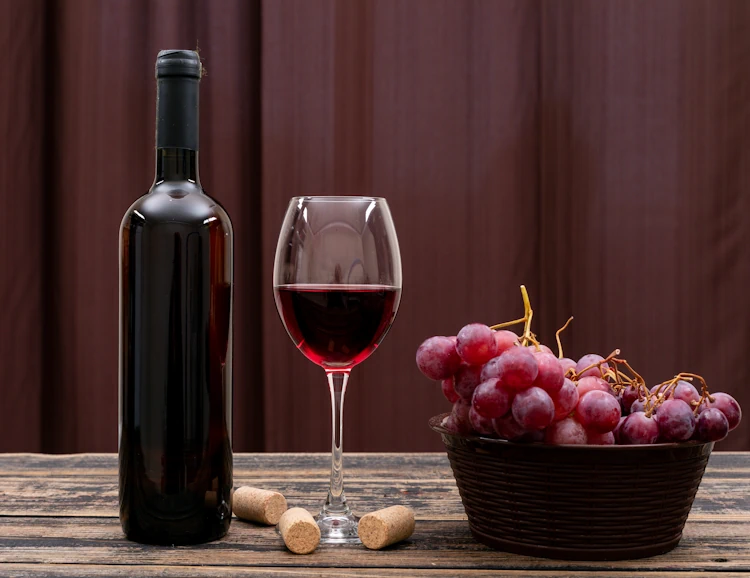Wine, often referred to as the elixir of life, has a rich history that intertwines the artistry of winemaking with the precision of scientific processes. From the cultivation of vines to the delicate pouring into a glass, the journey of wine involves a harmonious blend of art and science. In this exploration, we delve into the intricate world of the wine industry, uncovering the fascinating interplay between creativity and scientific expertise.
The Vineyard Canvas: Artistry in Grape Cultivation
The journey of wine begins in the vineyard, where the artistry of grape cultivation takes center stage. Winemakers, known as viticulturists, carefully select grape varieties, consider soil composition, and orchestrate the layout of vineyards. This artistic approach, akin to painting a canvas, sets the foundation for the flavors that will later grace the palate.
Terroir: The Unique Brushstrokes of Nature
Terroir, a term rooted in the French language, encapsulates the unique environmental factors that influence grape characteristics. This concept adds an artistic dimension to winemaking, as each vineyard’s terroir acts as the painter’s palette, contributing distinct flavors, aromas, and nuances to the grapes. The art lies in understanding and preserving these natural brushstrokes.

The Harvest Symphony: Timing and Precision
Harvesting grapes is a delicate dance between art and science. Winemakers must gauge the optimal moment to pick the grapes, considering factors like sugar levels, acidity, and phenolic ripeness. This precision, guided by scientific measurements, ensures that the grape juice carries the perfect balance of flavors essential for crafting exceptional wines.
Fermentation Alchemy: Science at Work
As grapes transform into wine, the process of fermentation unfolds—a realm where science takes the lead. Yeasts convert sugars into alcohol, and temperature control becomes crucial. Winemakers leverage scientific knowledge to manage fermentation parameters, extracting desired characteristics and crafting wines that align with their artistic vision.
The Art of Barrel Aging
Barrel aging introduces an artistic touch to the winemaking process. Winemakers select specific types of barrels—often oak—to impart nuanced flavors and textures to the wine. This stage, influenced by the mastery of coopers and the choice of wood, elevates the wine’s profile, infusing it with layers of complexity and depth.
The Symphony of Blending
Blending wines is a true art form, where winemakers compose symphonies of flavors. Different grape varietals, vineyard blocks, or barrel selections come together in a harmonious blend. The creative intuition of the winemaker guides this process, seeking a balance that transcends individual components and results in a masterpiece.
Bottling as Sculpture: Preserving the Vision
Bottling wine involves more than a mechanical process—it’s akin to sculpting the final form of the artwork. Winemakers choose bottle shapes, closures, and labeling with meticulous attention. The aesthetics play a role in shaping the consumer’s perception, enhancing the overall experience of uncorking and pouring a glass.
The Dance of Chemistry: Quality Control
Quality control in winemaking relies heavily on scientific principles. Chemistry governs aspects such as pH levels, acidity, and sulfur dioxide concentrations. Winemakers employ laboratory techniques to ensure that each batch meets quality standards while maintaining the artistic expression of the wine.
The Artistic Label: Telling a Story
The label on a wine bottle is a canvas for storytelling. Wineries often collaborate with artists and designers to create labels that reflect the essence of the wine. These labels, infused with creativity, serve as a visual introduction to the narrative behind each vintage.
The Tasting Experience: A Fusion of Art and Senses
As wine reaches the glass, the art and science culminate in a sensory experience. Tasting wine is an artistic exploration of flavors, aromas, textures, and the emotional connection evoked. It is a moment where the efforts of the winemaker and the nuances of the vineyard converge into a symphony for the senses.
Conclusion
The journey from vine to glass encapsulates the fusion of art and science in the intricate world of the wine industry. From the artistic cultivation of vines to the scientific precision of fermentation and quality control, winemaking is a craft that marries creativity with expertise. As wine enthusiasts savor each glass, they partake in a celebration of the harmonious interplay between the artistic vision of winemakers and the scientific principles that bring wines to life.
FAQs
- Q: What is terroir in winemaking?
- A: Terroir refers to the unique environmental factors, including soil, climate, and topography, that influence the characteristics of grapes and, consequently, the flavors and aromas of the wine produced from those grapes.
- Q: What is the significance of barrel aging in winemaking?
- A: Barrel aging imparts flavors, aromas, and textures to wine, contributing to its complexity and depth. Winemakers select specific types of barrels, often oak, to influence the final profile of the wine.
- Q: How does blending contribute to winemaking?
- A: Blending involves combining different grape varietals, vineyard blocks, or barrel selections to create a harmonious and balanced wine. Winemakers use blending to enhance the overall complexity and character of the wine.
- Q: Why is quality control important in winemaking?
- A: Quality control ensures that wines meet specific standards of taste, aroma, and chemical composition. It involves scientific analysis of factors such as pH levels, acidity, and sulfur dioxide concentrations to maintain the desired quality.
- Q: What role does the label play in the wine industry?
- A: The label on a wine bottle serves as a visual representation of the wine’s identity and story. It often reflects the artistic vision of the winery and contributes to the overall branding and consumer perception of the wine.





